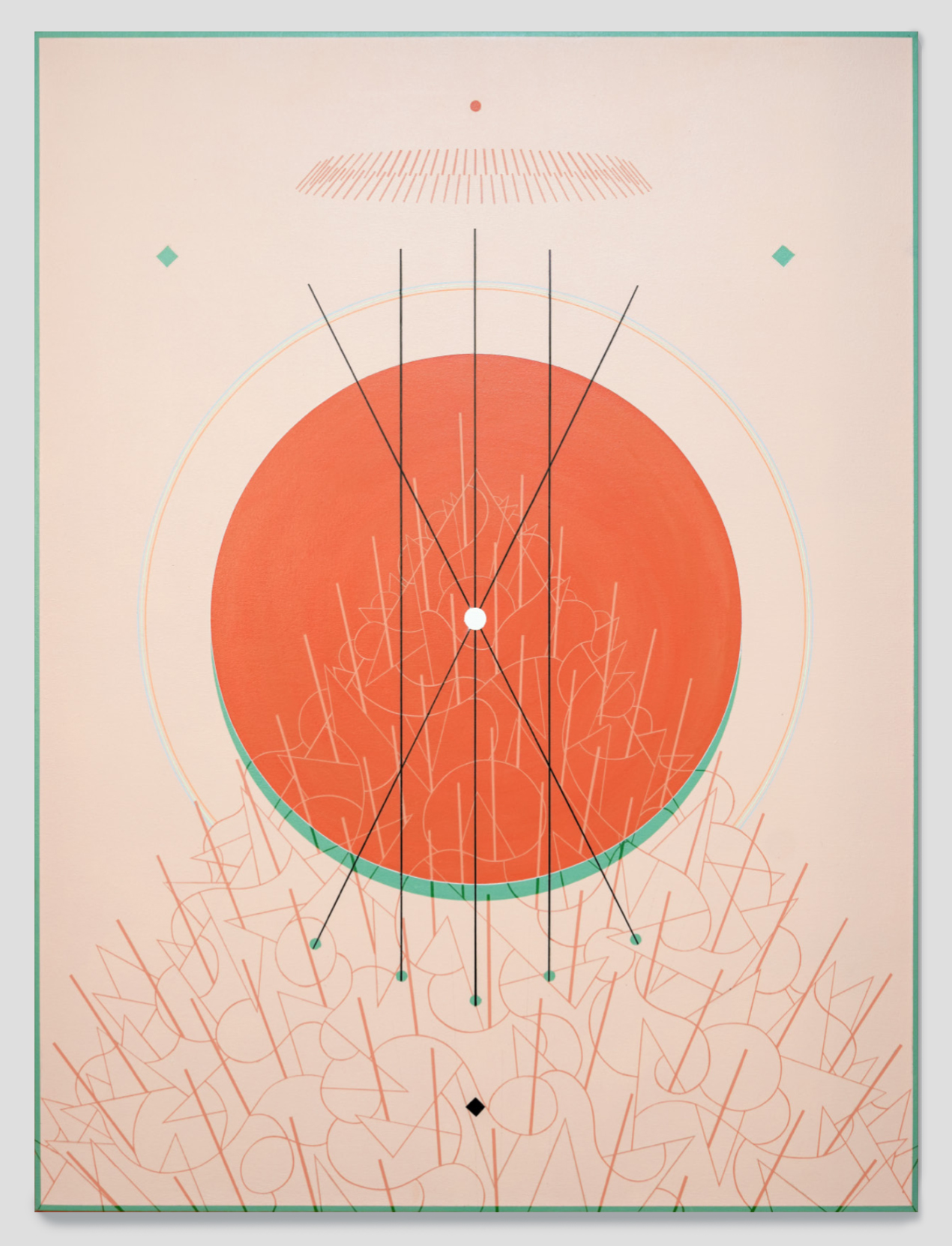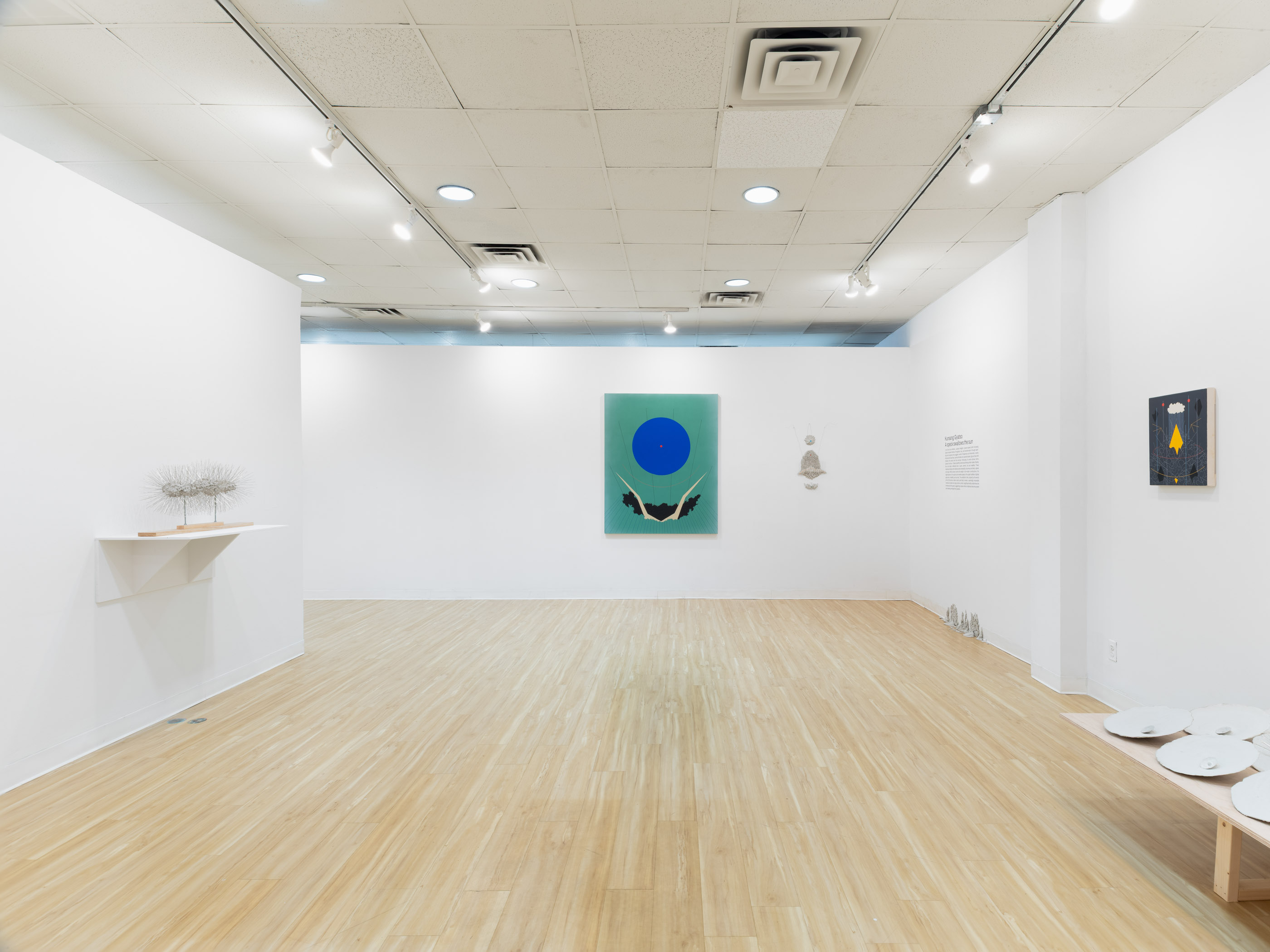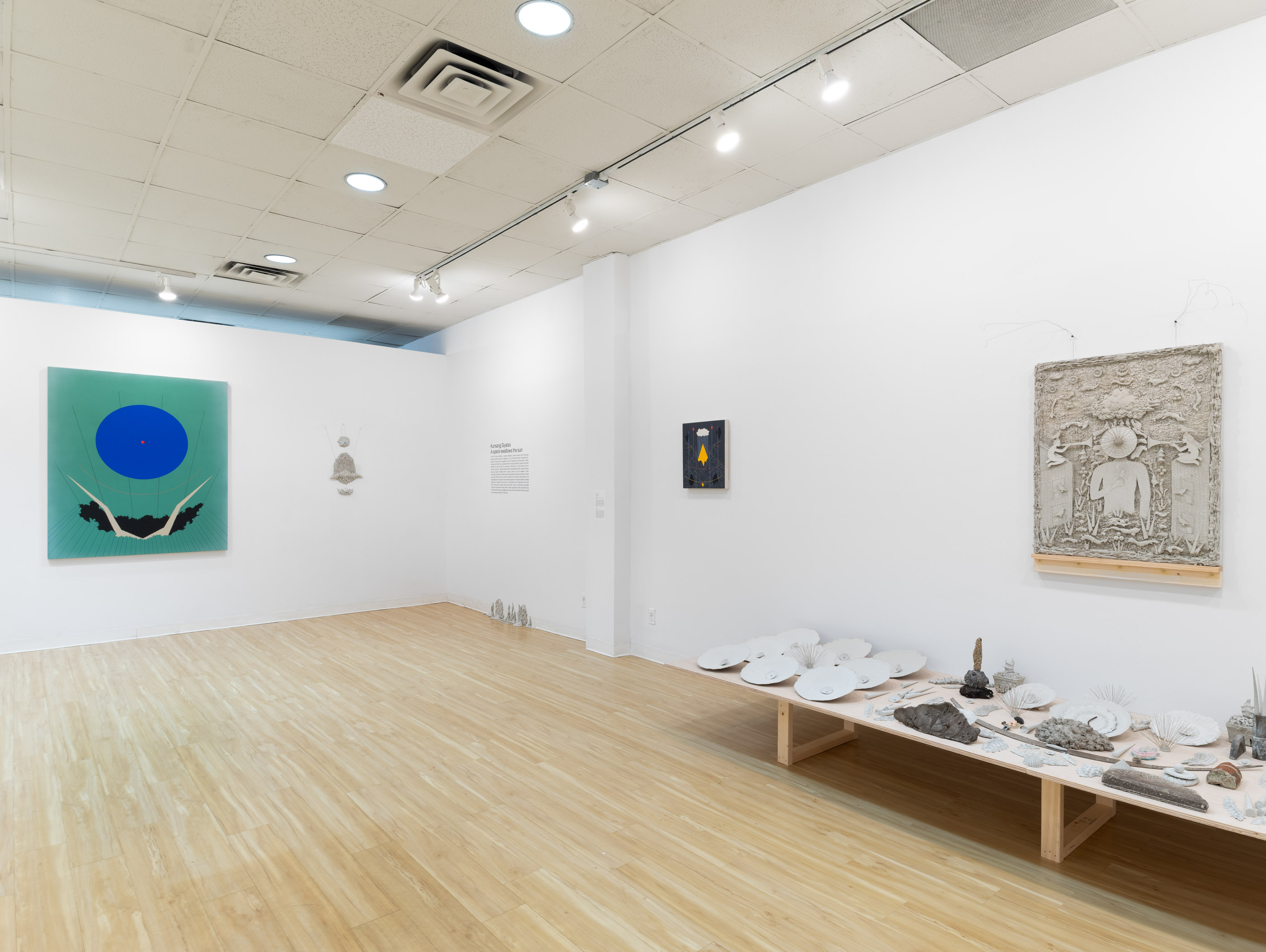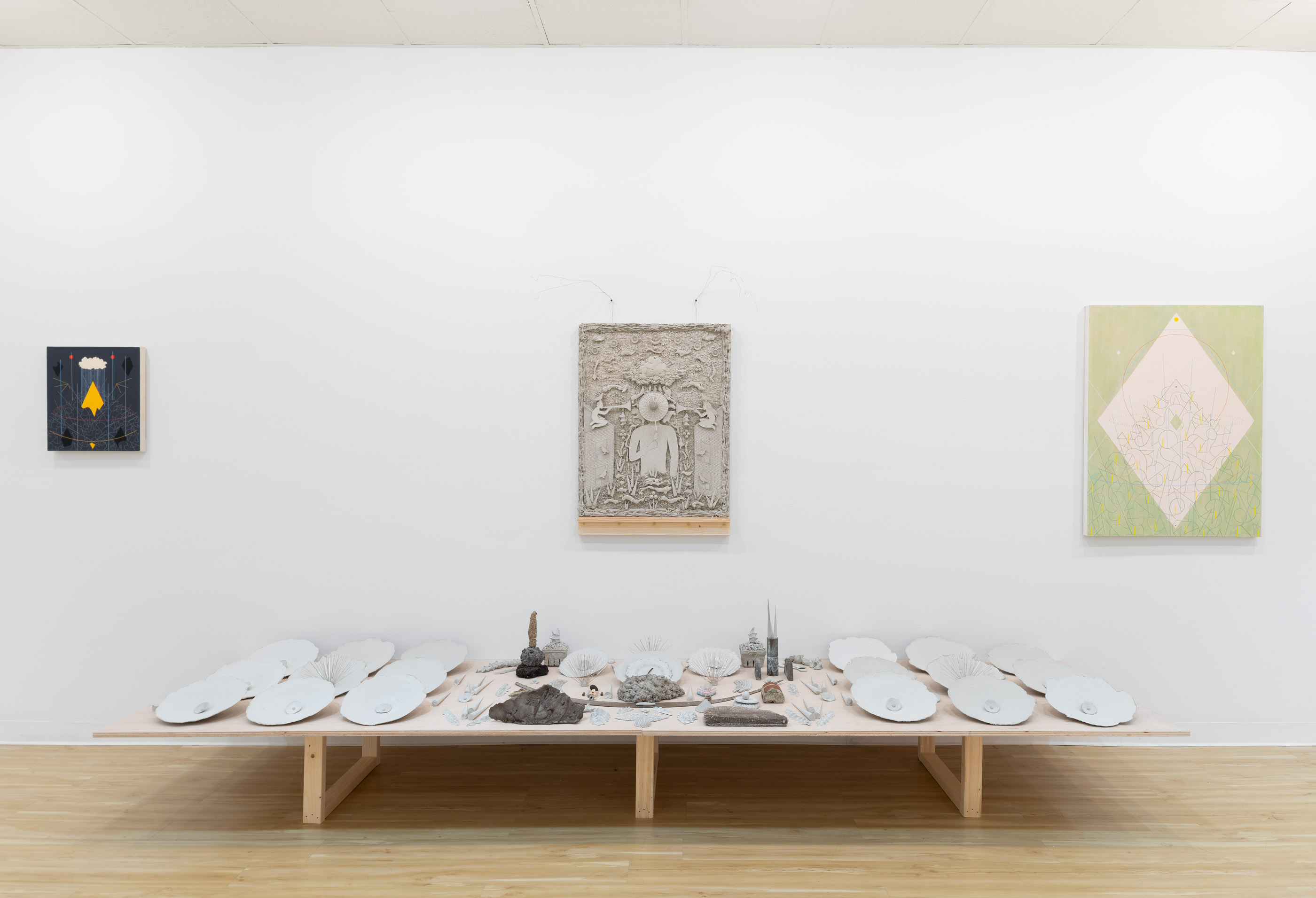Kunsang Gyatso:
A speck swallows
the sun
Kunsang Gyatso:
A speck swallows
the sun
September 18– December 6, 2025
![]()
Kunsang Gyatso: Detail of Goddess of Tangerine, 2023, painting, wood, concrete, plexi, foam, dried tangerines

Kunsang Gyatso: Detail of Goddess of Tangerine, 2023, painting, wood, concrete, plexi, foam, dried tangerines
Opening Reception: Thursday, September 18, 2025, 4:30–7:30pm
The Yeh Art Gallery at St. John’s University is pleased to announce Kunsang Gyatso: A speck swallows the sun, the first solo exhibition by Jackson Heights, Queens-based artist Kunsang Gyatso. A speck swallows the sun, brings together paintings and sculptures that integrate motifs from Tibetan Buddhist spiritual traditions, exploring themes of animism, migration, loss, inherited sensibilities to form, and the potential for abstraction to hold memory or induce change. The title, A speck swallows the sun, is drawn from a poem by the 15th-century Indian mystic poet Kabir and the phrase reflects a seemingly impossible inversion of power and scale, where something as small as a grain of rice overwhelms the vastness of the sun—suggesting a space where fragility becomes potent and meaning emerges from paradox. This echoes the concept of "Twilight Language" (Sandhya bhasha) from Hindu and Buddhist tantric traditions, which embraces intentional ambiguity, concealment, and absurdity.
Central to Gyatso's exploration of tradition are the tormas—occurring throughout his paintings—ritual objects in Tibetan Buddhism, often made of barley flour and shaped into abstract triangular or conical forms. They serve many purposes: offerings to deities, gifts to nature, protective symbols, or guardians placed before the altar. Rooted in an animistic worldview that sees life in all aspects of nature, tormas embody rituals of renewal and repair. Gyatso reimagines these forms through painting, using abstraction to explore memory, inherited gestures, and the transformative potential of art.
Gyatso works with cement as a central material in his sculptures, replacing the traditional barley flour of tormas. Cement evokes modernity and rapid change, recalling the reconstruction of his home village after the 2015 Nepal earthquake, when concrete houses replaced stone, mud, and wood. While stronger, these new buildings altered the landscape and left a sense of loss. By working with fast-drying Rapid Set Cement, Gyatso reflects on dislocation, urgency, and the restless pace of contemporary consumer culture.
In many of Gyatso’s works, cement forms are punctuated by delicate needles, each tipped with a single grain of rice. This directly references the sticks of incense or bamboo that punctuate the tormas made of barley flour. The juxtaposition of heavy, industrial cement with precarious materials evokes tension between permanence and vulnerability. Rice, central to Buddhist ritual as both sustenance and offering, also points to urgent global realities—its sacred symbolism colliding with the economic precarity of farmers in India where the rice originates. Gyatso transforms these everyday elements into layered meditations on fragility, resilience, and survival.
The exhibition also features an installation of Gyatso’s Goddess of Tangerine. Originally conceived and installed in dialogue with the shrine room at the Rubin Museum of Himalayan art, this work reflects on the Tibetan Buddhist concepts of cyclical time, impermanence, and the continual processes of creation and dissolution. In Gyatso’s imagined universe, tangerines—extinct and made sacred—become objects of ritual and care. By using dried tangerines to visualize time and impermanence, Gyatso comments on the climate crisis through the absurdity of losing such a common fruit. At the same time, the shrine also addresses displacement of objects from their origins and people navigating dislocation.
Kunsang Gyatso was born in the Himalayan region of Helambu in Nepal, home to the indigenous Hyolmo community, an ethnic Tibetan group. His art practice is informed by his layered history of migration, first from the village community to Nepal’s capital Kathmandu, and later to the United States. Working across varied media, his work interweaves interests in abstraction, materiality, ritual, tradition, ecology, and personal history.
Kunsang lives and works in Queens, NY. He received his BA in Painting from Hunter College, New York. His work has been exhibited in group shows at Wrightwood 659 (Chicago, IL), The Rubin Museum Of Himalayan Art (New York, NY), among others. He was a guest artist for the Open Studio program at the Metropolitan Museum of Art.







